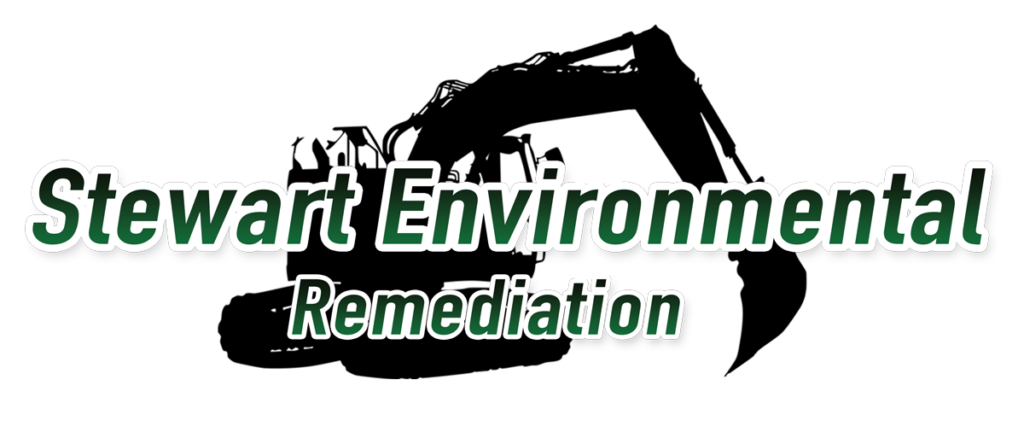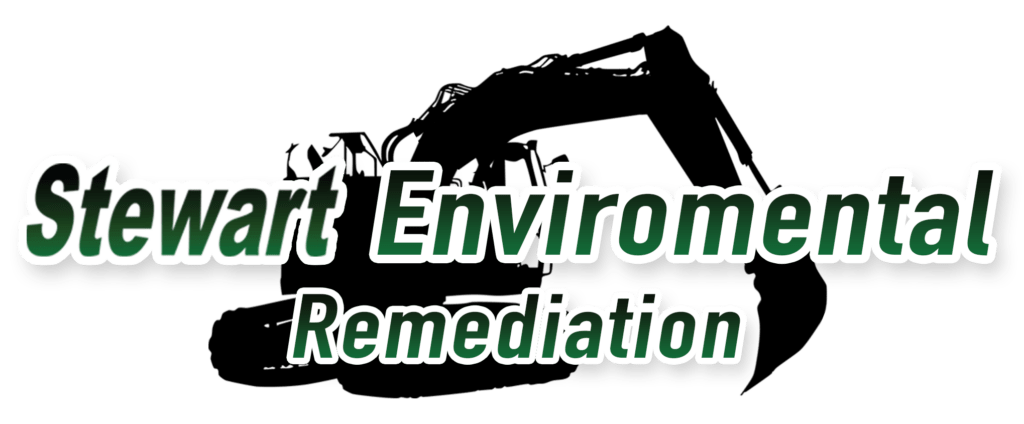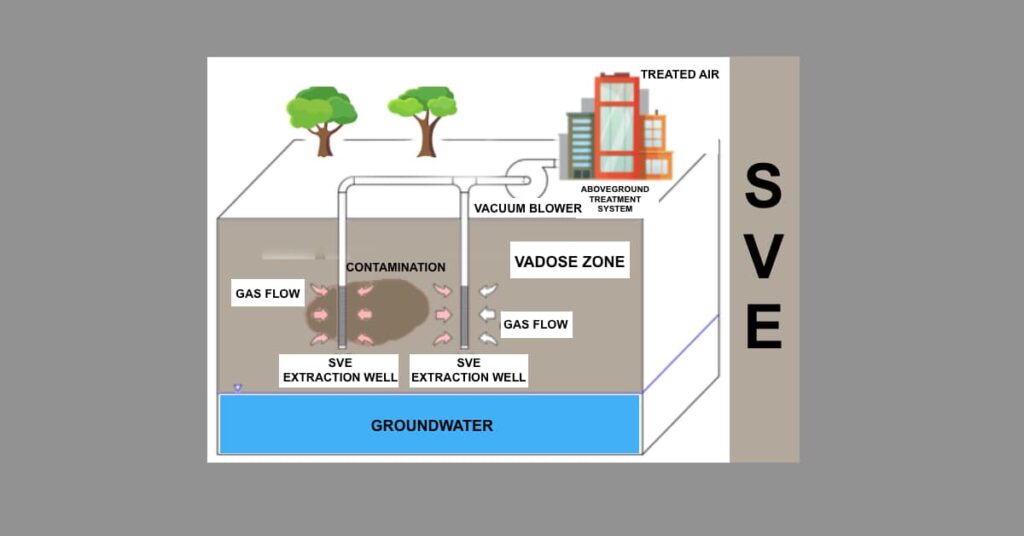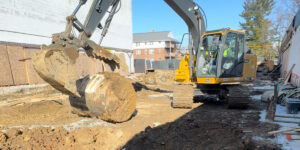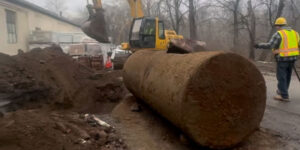Soil Vapor Extraction (SVE) is a widely used remediation physical treatment technique to mitigate soil and groundwater contamination caused by volatile organic compounds (VOCs) or other toxic chemicals in the vadose zone (unsaturated soils). SVE is also referred to as vacuum extraction or situ soil venting.
The treatment is based on the mass transfer of liquid (aqueous or non-aqueous and contaminant from the solid (sorbed) phases into the gas phase, followed by collection and the extraction of contaminated vapors from the soil matrix through vacuum blowers and vapor extraction wells to promote the volatilization and removal of the contaminants from the subsurface. Once the contaminated soil vapor is collected, it is treated above ground and discharged into the environment.
This process helps reduce the concentration of harmful chemicals in the soil and groundwater, restoring the site to a cleaner and safer condition.
Soil vapor extraction must be done by a professional environmental remediation company specializing in assessing, cleaning, and properly disposing of contamination sites. Stewart Environmental Remediation is that professional remediation company that services New Jersey, Connecticut and Pennsylvania.
Following, we discuss the Soil Vapor Extraction process, timing, effectiveness, monitoring, soil remediation and benefits.
The Process
SVA involves a multi-step process, starting with site characterization to identify the nature and extent of the contamination. Next, the soil and groundwater will be sampled, tested and analyzed to determine the type and concentration of contaminants and the depth and lateral extent of the contamination plume.
Once determined the site is contaminated, the proper SVE systems are installed to extract the contaminated vapors from the soil effectively. SVE systems typically consist of vertical or horizontal wells or boreholes installed in the contaminated area and a network of piping and vacuum blowers or pumps to create negative pressure.
The extracted vapors are then treated, typically using air stripping or activated carbon adsorption, to remove the contaminants before the vapors are discharged into the atmosphere.
Timing and Effectiveness
Various factors will determine the rate and extent of the mass transfer into the gas phase. A few are Henry’s Law, vapor pressure, boiling point, the temperature in the subsurface, soil grain size, soil moisture content, permeability, the carbon content in the vadose zone, subsurface heterogeneity, and the airflow driving force.
For example, Treating a highly volatile contaminant (such as trichloroethene) in homogeneous sand with low carbon and high permeability content is more manageable. In contrast, a low vapor pressure contaminant like naphthalene requires a longer treatment time with more extensive SVA enhancements, especially if present in a heterogeneous vadose zone with one or more low-permeability layers.
Soil Vapor Extraction effectiveness also correlates with the ability to induce airflow through contaminated portions of the vadose zone. Airflow in pervious mass is affected by the quantity of connected gas-filled porosity, a function of the total moisture and porosity content. Because low porose zones generally have higher water saturation, gas-filled porosity can be minimal; therefore, airflow in these zones is inhibited.
Monitoring
Monitoring and data collection are crucial components of the soil vapor extraction process. Regularly monitoring the system’s performance, including vacuum levels, airflow rates, and contaminant concentrations, is vital to ensure that the SVE system operates effectively and meets the required cleanup goals.
Monitoring also helps to track the progress of the remediation efforts and provides data for regulatory reporting purposes.
Soil Remediation
Once the site has been disrupted, when hiring a professional soil remediation company such as Stewart Environmental Remediation, you know that once the contaminants are removed, the aim is to bring the site back to its original condition, including restoring the natural hydrogeological and ecological function.
Benefits of Soil Vapor Extraction (SVE)
There are several advantages to using SVE as a remediation technique. First, it is a relatively cost-effective method compared to other remediation techniques, such as excavation and disposal. Second, SVE also has a relatively low impact on the site, as it does not require extensive excavation or disturbance of the soil, which can be especially beneficial in urban or sensitive areas where site access may be limited.
Additionally, SVE can be implemented with other remediation techniques, such as groundwater pump-and-treat systems or in-situ chemical oxidation, to provide a comprehensive and integrated approach to site cleanup.
Contact Stewart Environmental Remediation for Your Soil Vapor Extraction Needs
At Stewart Environmental Remediation, our Soil Vapor Extraction methods are cost-effective with minimal disruption to the site. \
We manage the entire process from initial permit applications to sampling, testing, SVA system design, installation, monitoring, and site restoration through to completion.
In addition, we work closely with regulatory oversight agencies to ensure a safe and efficient site closure.
Contact Stewart Environmental today, servicing New Jersey, Connecticut and Pennsylvania.
